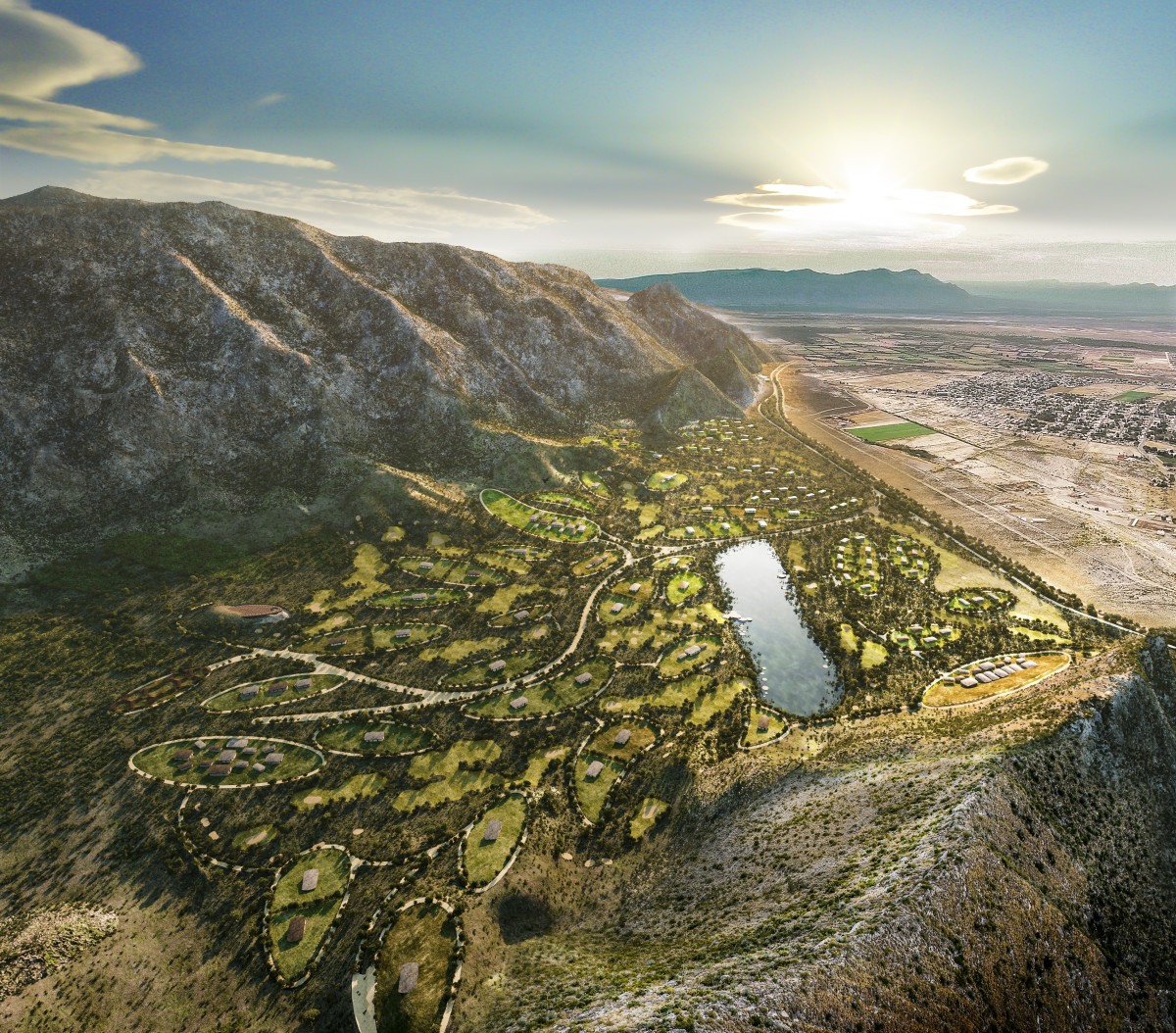On Course: Four Architects You'll Be Hearing More About

In 2019, while speaking to the American Society of Golf Course Architects at their annual meeting, I remarked, “OK, I get that folks love Bill Coore and Ben Crenshaw and their courses. Who doesn’t love Bill Coore and Ben Crenshaw and their courses? I know I do. But there are so many architects out there who do such good work and who simply don’t get the positive attention they deserve from print, digital and social media.”
Let me try to right that wrong. I still believe Coore and Crenshaw are terrific. So are Gil Hanse and David McLay Kidd, as well as the old guard of Tom Fazio, Robert Trent Jones Jr. and his brother Rees. Many other architects, however, are making serious noise in the profession. Here are four emerging architects that are poised for a breakthrough in 2022.

Jason Straka
When I teed it up with Jason Straka at Scottsdale, Arizona’s Troon North in 2019, I came away extremely impressed with his knowledge and passion for his craft. I also noted that he was so relatable, so affable, so comfortable to be with, he would make a great addition to anyone’s Friday night poker game. With that combination, it was no surprise that two years later, he was elected as president of the American Society of Golf Course Architects.
That Straka isn’t better known is attributable to his humble nature, and the fact that he did terrific design work for 17 years under the Hurdzan-Fry banner, where only those in the know could appreciate his contributions to such courses as 2017 U.S. Open venue Erin Hills and Rhode Island’s Shelter Harbor. A principal with Columbus, Ohio-based Fry/Straka Global Golf Course Design since 2012, Straka has notched a string of impressive original creations and makeovers in conjunction with partner Dana Fry.
What hasn’t changed since day one is Straka’s focus on the environment. Seemingly every design firm talks the talk, but Straka has walked the walk since the 1990s. He earned Cornell University Bachelor of Science and Master’s degrees encompassing agriculture, landscape architecture, agronomy and environmental golf course design. For his Master’s thesis, he profiled the development of Widow’s Walk Golf Course in Scituate, Mass., a Michael Hurdzan design that was to become North America’s first environmental demonstration and research golf course. He also worked as a greenkeeper and in golf course construction before shifting to design, so he understands every nuance of a golf course ground, above and below the surface.
Straka’s connection to the land and the environment traces to his childhood.
“I love the outdoors,” he told Golf Today U.K. “I grew up fishing, camping, canoeing, hiking, hunting, skiing and playing golf. I also enjoyed design, art and science, and was good at them.”
With impeccable credentials and a reverence for the land, Straka seemed almost inevitable to find the top rung of the course design ladder. Twenty-seven years into his career, he’s arrived.
Why 2022 will be a breakout year: Straka’s profile will skyrocket during his term as ASGCA president. He will represent the organization at industry functions, major championships and on every world stage where the topic is the state and future of golf course architecture. Look for a cascade of kudos in July when Fry/Straka opens the private, 27-hole Union League National Golf Club in southern New Jersey. A reimagining of the former Sand Barrens Golf Club, the exposed sand areas will naturally invite comparisons to Pine Valley, but the elaborate shaping that creates visual and strategic interest comes straight from the minds and hands of the architects.

Richard Mandell
I first encountered Richard Mandell in 1992, when he authored an architecture story for a magazine where I was an editor. We finally met in 1997 and finally played golf together in 2014 at Tulsa Country Club, an A.W. Tillinghast design. The fire for all things design burned as intensely that day as it did 22 years prior. Eight more years hence, Mandell is still writing and is at the peak of his design powers. He’s climbed to join the ranks of the most respected renovation and restoration artists, primarily for three simple reasons: 1, He has vast experience; 2, he does consistently good work; and 3, the work comes in on time and on budget.
After an apprenticeship under two ASGCA past presidents, in 1992 Mandell formed his own firm, which, seven years later, morphed into the Richard Mandell Golf Architecture in Pinehurst, N.C. He formed and helmed the Symposium on Affordable Golf in 2010 and led that effort for six years, with seminars that touched on restoring the joy and simplicity to the game that had seen a deplorable excess of spending. In 2013, he published a lavish, well-received book, The Legendary Evolution of Pinehurst. Golf Inc. magazine named him one of its 15 most influential architects in 2011.
In 2014, his restoration of two-time PGA Championship site Keller Golf Course in Minnesota won Golf magazine’s Municipal Renovation of the Year. In all, Mandell has contributed to more than 60 original and renovation design projects in 13 states and China. So, Mandell is not poised to be an overnight sensation. He simply deserves a bit more ink, given what he’s achieved over 30 years.
“It may be that I got pigeonholed as the ‘affordable’ guy,” Mandell said. “I know that one way our firm is distinguished from others is that we excel in creating something out of nothing, where most people just don’t see a solution. I just happen to believe in really good cost control. We thrive on coming up with solutions that are just as effective as expensive solutions. That calls for creativity.”
Why 2022 will be a breakout year: Mandell’s latest book, Principles of Golf Architecture will be published in late May. What will distinguish this book is that he will define the classic elements of design in art — line, form, shape, color, texture, etc. — and show how they apply to golf architecture.
In the field, Mandell will begin construction on the Bobby Jones Golf Complex in Sarasota, Fla., restoring Donald Ross features to Ross’ original 18 holes, and ensuring it no longer floods. His firm will also re-tool a nine-hole adjustable short course on 25 acres adjacent to the site. The course will involve nine separate greens and a variety of tee boxes that can create different routings on different days. Also on tap is a restoration of an early Ross course in Wisconsin, Oconomowoc Country Club, which Mandell says is on great land with a great routing; a third project at another Golden Ager, Florida’s Hollywood Beach Golf Club; and a fourth at Kennedy Golf Course for the city of Denver.

Agustin Piza
I have never met Agustin Piza, Mexico’s most celebrated architect, but I feel I’ve somehow absorbed his creative aura from projects he contributed to, including Palmilla and Querencia. He’s worked with Tom Fazio, Jack Nicklaus and Gary Player, among others, and in June 2021, joined forces with Golf Channel’s Brandel Chamblee to partner on select designs.
Between efforts at traditional course design, his forays into VR (Virtual Reality design), indoor family-oriented, simulated golf complexes, plus his newest venture into non-traditional design — the Butterfly Effect — and his position as director of the First Tee of Mexico makes him the most influential and innovative individual in Mexican golf.
Most intriguing is the Butterfly Effect concept. The term has dual meanings as applied to Piza’s designs. The first appropriates the Chaos Theory notion wherein one small change in a system can result in large changes later on. The other meaning is more literal — Piza’s new design concept embraces four distinct parcels of six-holes each that fan out, so that when viewed from above, resemble the wings of a butterfly.
The first planned version is for a resort community in Cuatro Cienegas, Mexico. “Augie’s concept is ingenious,” Chamblee said. “The four six-hole loops were designed to meet the ever-changing demands on time and to create a golf experience for different skill levels.”
Seven different combinations are available, up to 24 holes. Chamblee is clearly convinced they will break down barriers: “I think Augie could do for golf course architecture what Frank Lloyd Wright did for modern and contemporary architecture.”
Why 2022 will be a breakout year: In partnering with Chamblee, he has paired with one of the keenest analytical minds in the golf business, as well as one golf’s most influential media members. This will undoubtedly lead to more widespread recognition and exciting new opportunities.
Two Butterfly Effect courses already are in development. Golf Inc. tabbed Piza in its Power 2020 issue as an “Up-and-Coming Superstar.” It now looks as if Augie Piza is ready to deliver on that promise.

Jeff Danner
Sharing a golf cart with Danner in 2021, while touring one of Forrest Richardson’s original routings in Scottsdale, I was struck with the joy that Danner exhibited on seeing one hole after the next unfold before him. He would analyze it, put it in the perspective of what he’s seen elsewhere and discuss how its features could be restored or improved. “There’s a guy who likes his job,” I thought.
Danner is no stranger to airplanes. Born and educated in Illinois, he ultimately moved to Florida and served as a senior design associate with Greg Norman Golf Course Design. Prior to his five-year stint with Norman, he honed his skills working for Lohmann Golf Designs and Golfplan. In 2021, he relocated to the Bay Area of California, joining Forrest Richardson’s firm as senior golf course architect, in the newly renamed firm of Richardson | Danner. He has worked in or traveled to more than 30 countries, contributing to many award-winning new construction and renovation projects. What resonates with him most, however, are the special projects that expand access to more golfers.
In Illinois, he assisted on taking an old driving range plot and transforming it into a five-hole, pitch-and-putt/practice range combo that was handicap-accessible to those in wheelchairs. “Those type of projects are exciting,” said Danner, “when you get to work with an organization that’s out to serve the greater good.”
On the Black Sea in Turkey, Danner helped to create a course by diverting a lot of heavy fill material and muddy soil to reclaim the site, building an interesting, links-landish canvas in the process. The course would go on to host the Deaf Olympics.
“I believe that golf needs to be more inclusive,” said Danner. “I’ve always been excited to be working on public access courses, probably because I grew up around public golf. Sustainable golf is more than environmental stewardship. Without inclusivity and golfer participation, golf isn’t a viable business. It all goes hand in hand.”
Why 2022 will be a breakout year: In joining Forrest Richardson, immediate past president of the American Society of Golf Course Architects, Danner pairs with one of the most creative, out-of-the-box thinkers in the business.
One of their first collaborations was a remodel of Alaska’s Anchorage Golf Course, which will make history in 2022 when it hosts the U.S. Senior Women’s Amateur, as Alaska gets its turn as the 50th state to host a USGA national championship. Their work won an ASGCA Environmental Excellence Award in 2021 for utilizing a non-traditional construction plan that resulted in fewer carbon emissions. A bunker renovation program, turf reduction and drainage improvements were designed in compliance with the Anchorage Climate Action Plan.
NEWS AND REVIEWS
Worlds Away
Say goodbye to World Woods. This outstanding 36-hole complex in Brooksville, Fla., has always been shrouded in mystery, from the weird name to the lack of lodging to the absentee ownership. To its detriment and its appeal, it was smack in the middle of nowhere, 50 minutes from Tampa and 80 minutes from Orlando in west-central Florida.
Yet, its merits as a public golf mecca were unquestioned. Tom Fazio sculpted two top courses amid the sandy subsoil, heaving terrain and mature trees: Pine Barrens, intended to be a Pine Valley homage, and Rolling Oaks, an Augusta National wanna-be. For years, the courses sported an impossibly low green fee, $119 in prime time, $40 in summer. Even then, World Woods was fabled more for its unparalleled practice facilities, including a nine-hole executive course and a 22-acre, four-sided range. Unfortunately, maintenance funds dried to a trickle in recent years. Conditions regressed, so even that paying that paltry price tag was too much. The property isn’t going anywhere, but massive changes are on the way.
On Jan. 10, 2022, rumors became reality. The development team at Cabot, a Canadian concern co-founded by Mike Keiser and Ben Cowan-Dewar will begin the transformation of World Woods this spring, starting with a new name, Cabot Citrus Farms. Cabot is best known for creating Cabot Links and Cabot Cliffs in Nova Scotia and has several new projects on tap, among them being Cabot St. Lucia in the Caribbean, designed by Coore and Crenshaw and scheduled to debut this year.
The immediate plans at World Woods call for a redesign of the two championship courses, plus additions that include a par-3 course, a putting course, a new clubhouse, expanded practice facilities, real estate development, retail space and resort-style amenities. Architects have not yet been revealed, but many of us will miss Fazio’s handiwork, especially on the Pine Barrens. Ownership, however, feels this land is so special that even more inspiring designs can be hewn. With an expected debut in 2023, we’ll soon know what the new golf is going to look like at Cabot Citrus Farms. With the names behind the development team, expect a home run.
Hanse in the Desert
Gil Hanse is most renowned for his award-winning classic course restorations, less so for conjuring up inspired original golf holes from an uninspiring site. When Irving Azoff calls, however, you answer the phone.
Azoff, a music management (the Eagles) and movie production ("Urban Cowboy," "Fast Times at Ridgemont High") titan, is a keen, design-savvy golfer. When he and a similarly prominent group of backers decided they desired a very private golf playground of their own in Southern California, they secured a plot of flat, orchard-dotted farmland in Thermal, Calif., on the southeastern outskirts of Palm Springs that would do nicely. From an A-list of architects, they chose Hanse, the tipping point being how much the backers admired his accomplishments at Ohoopee Match Club in Georgia. Look for Jeule Ranch Golf Club to debut in 2023, but good luck getting aboard. The membership estimates range from 50 to 100 total.
Soaring Eagle
The Golf Club at Eagle Mountain in Fountain Hills, Ariz., has never quite gotten its due. Among the rich public-access treasures to be found nearby are 36-hole complexes at We-Ko-Pa, Troon North, TPC Scottsdale and Grayhawk. So it’s understandable why Eagle Mountain might get lost in the mix. Consider it found.
Following irrigation and drainage enhancements in the summer of 2021, the 26-year-old Scott Miller desert design now plays firmer and faster, noticeably on approaches. In addition, the number of bunkers was slashed from 61 to 30. They’re still large, but the increased playability makes navigating the course a pleasure instead of a penance. Eagle Mountain might never rise to a trophy-course level, but with stunning mountains views, compelling elevation changes and a dramatic closing par 4, it sure shines like one.
